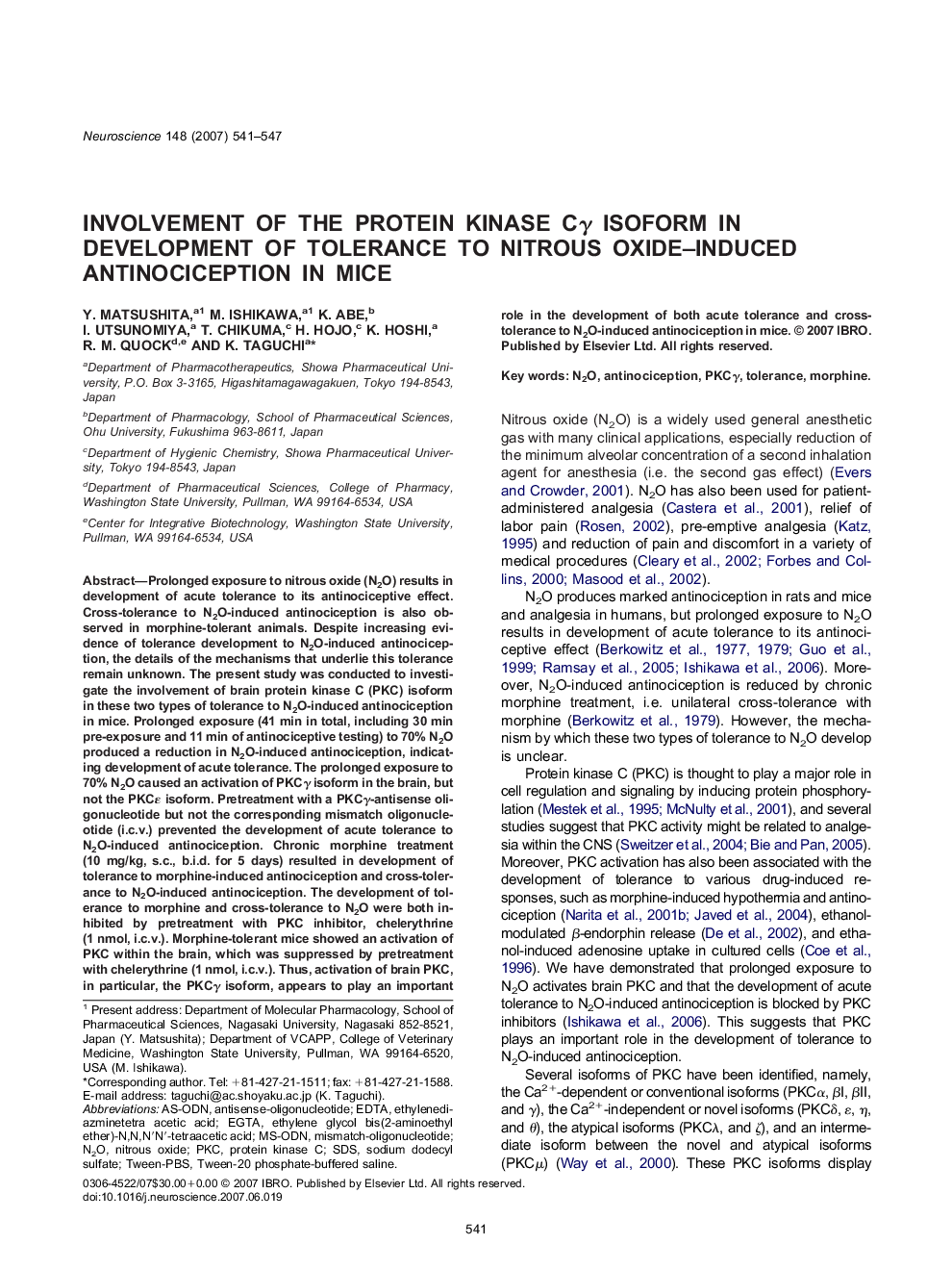| Article ID | Journal | Published Year | Pages | File Type |
|---|---|---|---|---|
| 4341342 | Neuroscience | 2007 | 7 Pages |
Prolonged exposure to nitrous oxide (N2O) results in development of acute tolerance to its antinociceptive effect. Cross-tolerance to N2O-induced antinociception is also observed in morphine-tolerant animals. Despite increasing evidence of tolerance development to N2O-induced antinociception, the details of the mechanisms that underlie this tolerance remain unknown. The present study was conducted to investigate the involvement of brain protein kinase C (PKC) isoform in these two types of tolerance to N2O-induced antinociception in mice. Prolonged exposure (41 min in total, including 30 min pre-exposure and 11 min of antinociceptive testing) to 70% N2O produced a reduction in N2O-induced antinociception, indicating development of acute tolerance. The prolonged exposure to 70% N2O caused an activation of PKCγ isoform in the brain, but not the PKCε isoform. Pretreatment with a PKCγ-antisense oligonucleotide but not the corresponding mismatch oligonucleotide (i.c.v.) prevented the development of acute tolerance to N2O-induced antinociception. Chronic morphine treatment (10 mg/kg, s.c., b.i.d. for 5 days) resulted in development of tolerance to morphine-induced antinociception and cross-tolerance to N2O-induced antinociception. The development of tolerance to morphine and cross-tolerance to N2O were both inhibited by pretreatment with PKC inhibitor, chelerythrine (1 nmol, i.c.v.). Morphine-tolerant mice showed an activation of PKC within the brain, which was suppressed by pretreatment with chelerythrine (1 nmol, i.c.v.). Thus, activation of brain PKC, in particular, the PKCγ isoform, appears to play an important role in the development of both acute tolerance and cross-tolerance to N2O-induced antinociception in mice.
